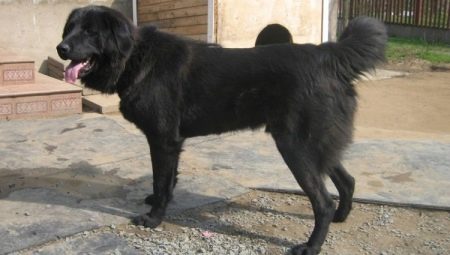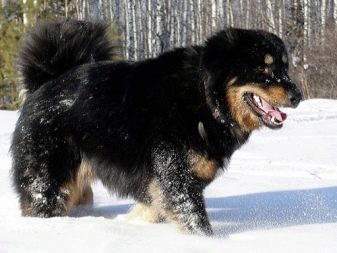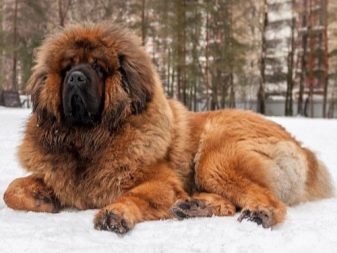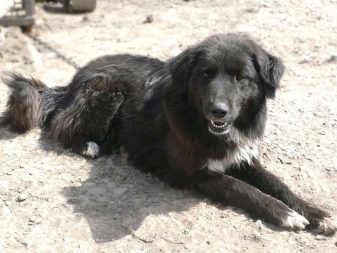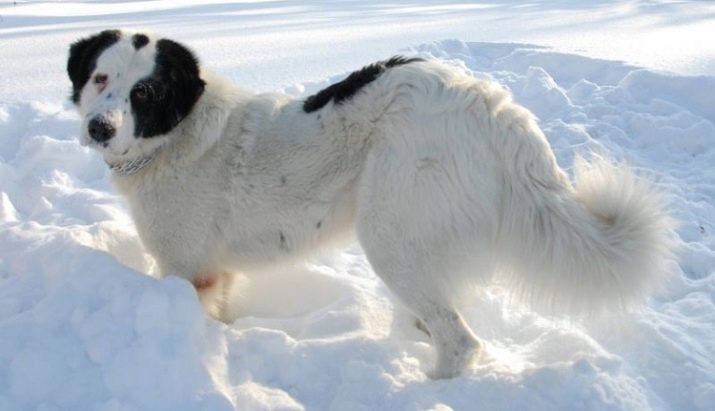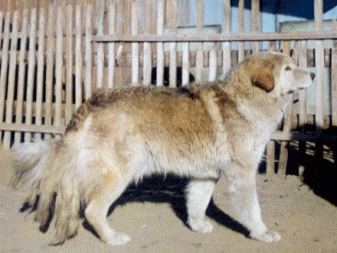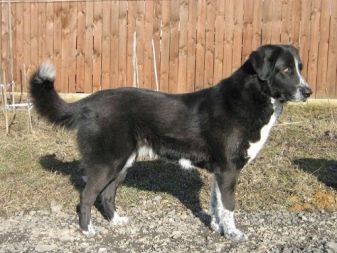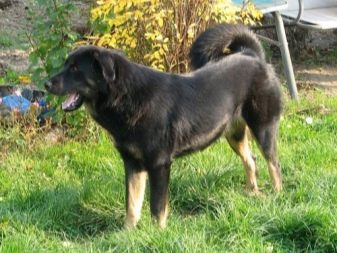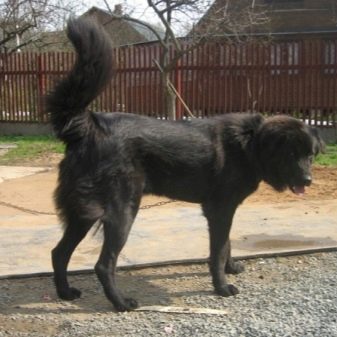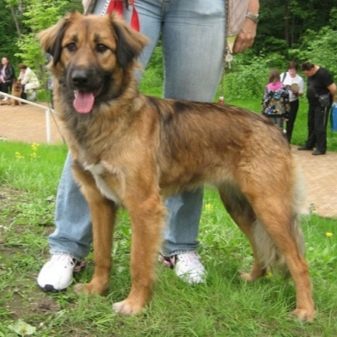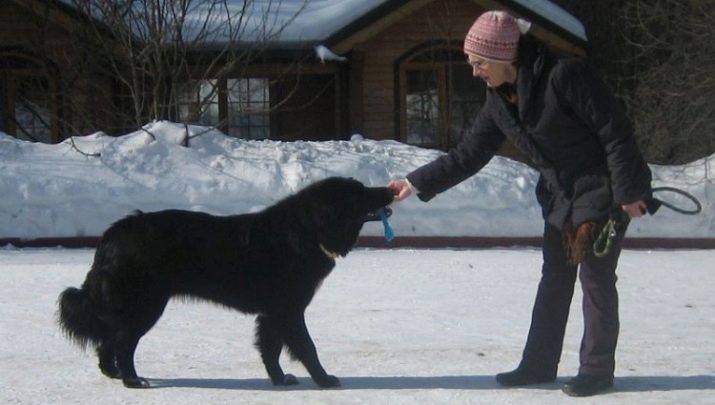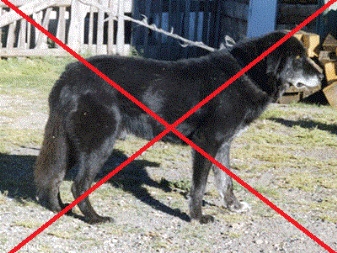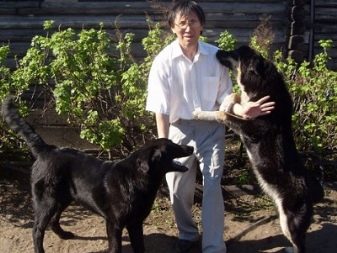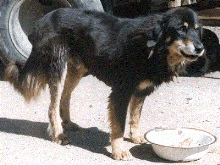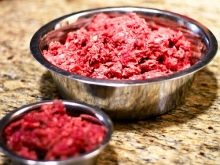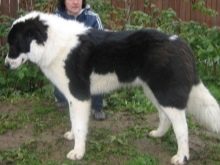The Tuvinian Shepherd Dog does not have such wide distribution on the territory of our country as other types of sheep-dogs, which is connected with the history of the origin of the breed and its specialization.
A bit of history
The Tuvinian Shepherd is a shepherd aboriginal dog, which is the result of centuries-old selection. Often, you can hear the popular name of the breed, such as the Tuvinian guard, which also fully reflects the main functions of this strong and reliable dog. The origin of the breed is associated with the active development of breedership, characteristic in those times for the peoples of Tibet, Mongolia, Tuva and Altai.
Initially, numerous herds of yaks were guarded by Tibetan mastiffs and native shepherd dogs - Mongolian shepherds. As a result of their crossing, a new breed appeared.
The Tuvinian Shepherd Dog turned out to be an extremely disciplined dog and absorbed all the best guard and guard qualities of its ancestors. She coped well with livestock, protected private homes from attacks of wild animals and acted as a reliable companion on long trips and hunting.
However, with the entry of Tuva into the Soviet state, the demand for this breed decreased, and consequently, the development of the breed slowed down dramatically. This is due to the ban on indigenous nomadism and the promotion of a sedentary lifestyle. As a result, by 1959 purebred individuals remained critically low, while those that survived were neutered.
The revival of Tuvinian Shepherd Dogs as an independent breed began to occur only in the early 2000s, with the support of the regional authorities of Tyva and with the involvement of state grants. As the breeding material were selected seven of the best individuals, which were used to restore the breed. At present, there are two pedigree kennels in the republic, whose employees make every effort to preserve this beautiful and quick-witted shepherd dog, which has served people for centuries.
However, despite the enthusiasm of dog breeders, The total population of Tuvinian shepherds is at a critical point and barely exceeds 100 individuals. This is due to the non-recognition of the breed. International canine organization, which by its authority could well contribute to its popularization.
Breed characteristics
Due to the fact that dogs were bred in a sharply continental climate, they are perfectly adapted to the harsh mountain conditions and rapid temperature changes. The unique structure of wool repels water and allows animals to feel great in both forty-degree frosts and fifty-degree heat.
Appearance
Due to the non-recognition of the Tuvinsk Shepherd Dog International Film Festival, there is no official description of the breed, therefore the standard is conditional and is taken into account by specialists in breeding. So, the Tuvan shepherd is a rather large animal: the growth of a dog at the withers reaches 60-70 cm, the bough is up to 58 cm. The weight varies from 38 to 50 kg for dogs and from 30 to 40 kg for bitches.
Dogs are distinguished by a strong body and well-developed musculature, and the format of bitches is somewhat more elongated than in males.
Breed is proportional in proportion to the body head, wide lowered chest and tucked abdomen. Brown eyes are not too large and have an oval shape, the nose is quite wide with a large lobe, lips have a dark color and are tightly pressed to the jaw. The ears are triangular in shape and set high, the teeth are rather large, with the correct bite and a full set of fangs.
The dogs have a wide, strong neck, an unstressed lower back and a straight back. The paws are straight and strong, forming a tight clump, the claws are strong, painted black. The tail has an elongated size, a low fit and is thickly covered with wool.
The hair of animals is very elastic and thick, forming a well-marked mane in the area of the withers and neck. The undercoat is quite dense, but at the same time soft and light. Behind the ears and on the tail, the wool often falls down, forms “earrings” and looks untidy.
The color of the Tuva shepherd is predominantly black, but sometimes the breasts and paws may be covered with white spots. More rarely, there are white representatives of the breed, whose body is covered with large black spots, and the lips of such individuals are often spotted. In addition to white and black colors, brown, sable, and even gray with large white spots are sometimes found.
However, such representatives can be seen extremely rarely, and most animals still have a black color.
Character traits
The main feature of the Tuvinian Shepherd’s character is its ability to make independent decisions without looking at the person. The dog itself decides when it should intervene in this or that situation, be it the guard of the herd or the host’s escort. In a regular situation, the representatives of the breed are very calm outwardly, but this is only an appearance Tuvan is always alert and at any time ready to protect the property entrusted to him.
Young individuals are often stubborn and do not immediately respond to commands, but with proper and timely education, not only a reliable guard can be raised from them, but also an excellent companion.
Animals recognize the mood of the owner by his facial expressions and emotions and are distinguished by high devotion. Unreasonable aggression among representatives of this breed is absent, however, in the event of a real danger, the attacker will have a very hard time. Tuvan shepherds get along well with other dogs living with them in the same house, and do not pay attention to cats, but when strangers violate the territorial border, they immediately attack. Outside their territory, they are absolutely indifferent to outsiders if they do not take any action against the owner.
Dog socialization is best done with 2-3 months, while teaching her to loud sounds, vehicles and city noise. As for training, animals give in to it quite easily and by four months they are able to master the simplest commands: “sit”, “come to me”, “cannot” and “place”. From 4-5 months with a dog you must complete an early course, and then proceed to the development of guard and guard qualities.
Training is conducted according to the classical scheme using the reward system.
Content policy
Considering the origin and main purpose of the breed, a private house with a large yard and a spacious aviary will be the best place to keep a Tuva sheep-dog. At the same time, the animal must be able to move freely within its territory and regularly receive sufficient exercise.
It’s strictly forbidden to sit a shepherd dog on a chain, and if you want to restrict its access to a garden or garden, you should build a protective net or build an aviary. In addition, a booth should be installed on the site, which will serve as an observation point for the animal and protect it from the weather in case of strong wind and rain.
Dog care procedures are the most common.
- Dogs should be combed weekly, and during the moulting period they will have to comb every day. Particular attention should be paid to the neck, abdomen, tail and groin areas.
- Treatment for parasites should be carried out regularly, due to the thick and long hair of the animal, which is an ideal breeding ground for fleas.
- It is necessary to bathe a shepherd dog only as it is contaminated using special shampoos for long-haired dogs.
- Treatment of the nose, eyes and ears should be done once a week, and claws should be trimmed as they grow.
- Also, once every 3-4 months, the pet must be given anthelmintic and immunized according to the calendar.
They are feeding “Tuvinians” either with a balanced feed for large breeds, or with natural products. With natural nutrition in the daily diet of the animal should be 30 grams of protein per kilogram of weight, and the rest should fall on vegetables, cereal and fresh greens. Sheepdogs can be fed not too fat meat, cottage cheese, rice, buckwheat, oatmeal porridge and sea fish. Moreover, in the latter it is necessary to remove all the insides, choose large bones and cut off the head.
Eggs can be given, but this should be done no more than twice a week. What is a puppy, what is an adult can not be fed tubular bones, sweet and pepper dishes, potatoes, pasta, river fish, grapes, fatty sour cream, plums, citrus, chocolate, muffins and scraps from the host table.
Additionally, you should give bone meal, vegetable fats, mineral supplements and vitamins.
You can look at puppies of the Tuva Shepherd Dog a little lower.
